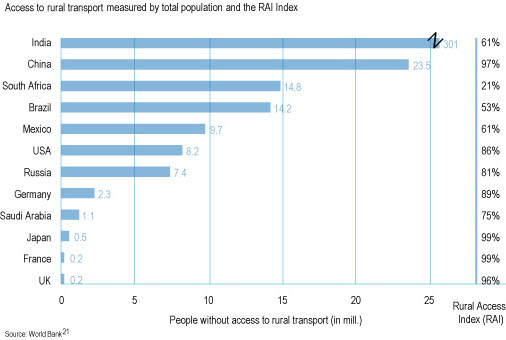Transportation companies are facing a wide array of challenges. Knowing what’s out there, identifying an appropriate response and acting quickly is critical to success.
It is difficult to provide one consistent answer due to the significant differences among emerging countries, point out by many panelists. China may overtake industrialized countries, however India likely will not. Some note that the substantial investments now underway will not be sufficient to redress the combination of existing global infrastructure backlog and growth in demand for emerging as well as developing countries. Further, given the long-term planning cycles necessary for transport infrastructure, twenty years is seen as a too short time-frame to speak about overtaking, although emerging economies may close the gap with developed markets somewhat.
Enormous investments are needed in transport infrastructure development as regards to the growth prospects of emerging countries. But until the massive investments in transport infrastructure in emerging countries are implemented, logistics service providers will still face significant difficulties in transport operation. In this situation, the grand challenge for emerging countries is urbanization. Over 60% of the world’s population will live in cities by 2030 — a figure clearly indicating the global megatrend of urbanization. Urban areas will continue to attract greater levels of commercial investment in the future and global capital flows in transport infrastructure are likely to reflect this trend.
Today, half of the world population still lives in rural areas. Only 69% of rural residents have access to reliable transport, as measured by the Rural Access Index (RAI) developed by the World Bank. The RAI measures the number of rural inhabitants living within two kilometres of an all-season road as a proportion of the total rural population. According to the World Bank, the RAI has significant links with other parameters such as poverty, since physical isolation contributes to poverty. Taking a closer look at the RAI in different countries of the world different ratings can be identified in developed as well as developing countries.

In India, 301 million people do not have access to rural transport. While the situation in China is far better according to the RAI, China still has 23.5 million people who live without access to transport. In order to improve connectivity, in 2009 China announced the “Logistics Industry Rejuvenation Plan” which focuses on enhancing the connection between more developed coastal markets and less well-served interior markets. Promoting rural development and improve internal supply chains is the final objective.
One key obstacle to the provision of rural transport infrastructure is that often development does not go beyond the implementation of basic infrastructure, when a more holistic approach that assesses adequate financing and coordination with other transport services is critical. The access needs of rural communities should be taken into consideration in rural transport development. The goal should be to design transport infrastructure at a low cost which supports the establishment of networks within a rural area. Additionally, the infrastructure model needs to be designed as a hub and spoke system providing appropriate connectivity between rural and key urban areas.
Currently transport infrastructure investments tend to follow global capital flows, actually this means transport infrastructure investments focus on urban areas. Cities benefit from so-called agglomeration effects, where clusters of economic activity reduce costs and enhance productivity for individual companies, thereby attracting additional companies also looking to benefit from local suppliers, labour pools and other factors contributing to economies of scale and network effects. This cycle creates economic growth which restarts capital flows.
It is effectively a vicious circle for rural regions, which receive less investment in infrastructure and as a result are less able to drive economic growth. On the contrary, this interdependence between investment and economic activity may be positive for urban areas.
SZ&W Group’s Transportation network comprises a worldwide team of professionals to help you achieve your potential. The team brings their practitioner knowledge, experience and global perspective to assist you in understanding the implications of various developments in the transportation industry and help you prepare for their effect. |